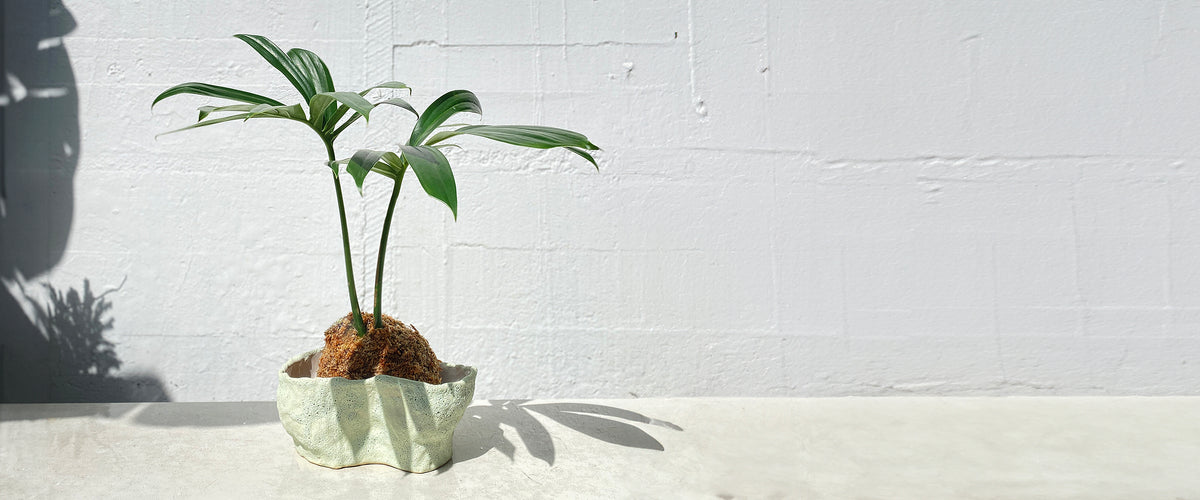Alocasia
 Botanical Name: Alocasia (variety)
Botanical Name: Alocasia (variety)
Common Name: Monkey mask
Plant Family: Araceae
About the fascinating Alocasia….
Alocasia are famous for their striking foliage and sculptural shapes some of the best in the houseplant world, There are around 80 species of this distinctly veined beauty, Alocasia’s are native to subtropical Asia and eastern Australia, and some specimens boast leaves that can grow up to almost three feet long!
Light, Temperature & Sun….
Alocasia need bright, but indirect light. The natural habitat, is on the forest floor beneath the tree canopy. Direct sun will cause the leaves to burn, so avoid placing your Alocasia in a spot where it'll be exposed to direct sun for a prolonged period. However this doesn’t mean it like low light, Alocasia’s are not very tolerant of low light conditions so place it in a bright spot. They like humidity so avoid placing yours near to an A/C or a heater if possible.
Watering….
Alocasia like soil a little on the drier side, but require high humidity to do well. Confusing right! We recommend placing a pebble tray or a humidifier beneath your Alocasia. For watering, allow the top 5-10cm to dry between watering to ensure the plant isn't sitting in soil that is too wet. Importantly Alocasias are winter dormant and will require much less watering as the soil will take longer to dry. Alocasias can be susceptible to root rot and fungal infections if their soil doesn't have proper drainage and becomes waterlogged, so we always plant in a pot with a drainage hole or in planter that alows air to the roots.
Problems….
Droopy leaves are often caused by over or under watering, pests, insufficient light, or insufficient nutrients in the soil. Brown spots or holes in the leaves can signal that the plant isn't receiving enough water. The drooping foliage and dry soil are what confirms this Alocasia Polly needs more water.
Why are there spots on the leaves?
Alocasias can be sensitive to salts, minerals, and chlorine in tap water, which causes spotting. Let your water sit for 24 hours in a bucket to let some of the nasties to evaporate. Or use rain water or distilled water.
Soil or mix….
For a nice free draining light mix, use a mix like the 5-1-1 - 5 parts bark or fernwood (ponga) fibre, 1 part perlite, quality potting mix, avoid using peat but otherwise just make sure your mix is light.
Dormancy….
if you alocasia goes dormant don’t throw it out as it may well come back when it gets warm again. Pop it in the green house if you have one and wait…
Fertilization….
Fertilize every 2-4 weeks during the growing season with a balanced, water soluble fertilizer, like this one. Dilute to half strength, particularly in spring and autumn. There is no need to fertilize during the winter. Flush the potting mix every 2-3 months.
Propagation….
Gently divide the rhizome when repotting in springtime, the rhizome we sprout ours in damp paper towelling, its takes a while so be patient, then pot them in a small pot with a super light mix as above.
Toxicity…
these are TOXIC so keep away from children and pets.
